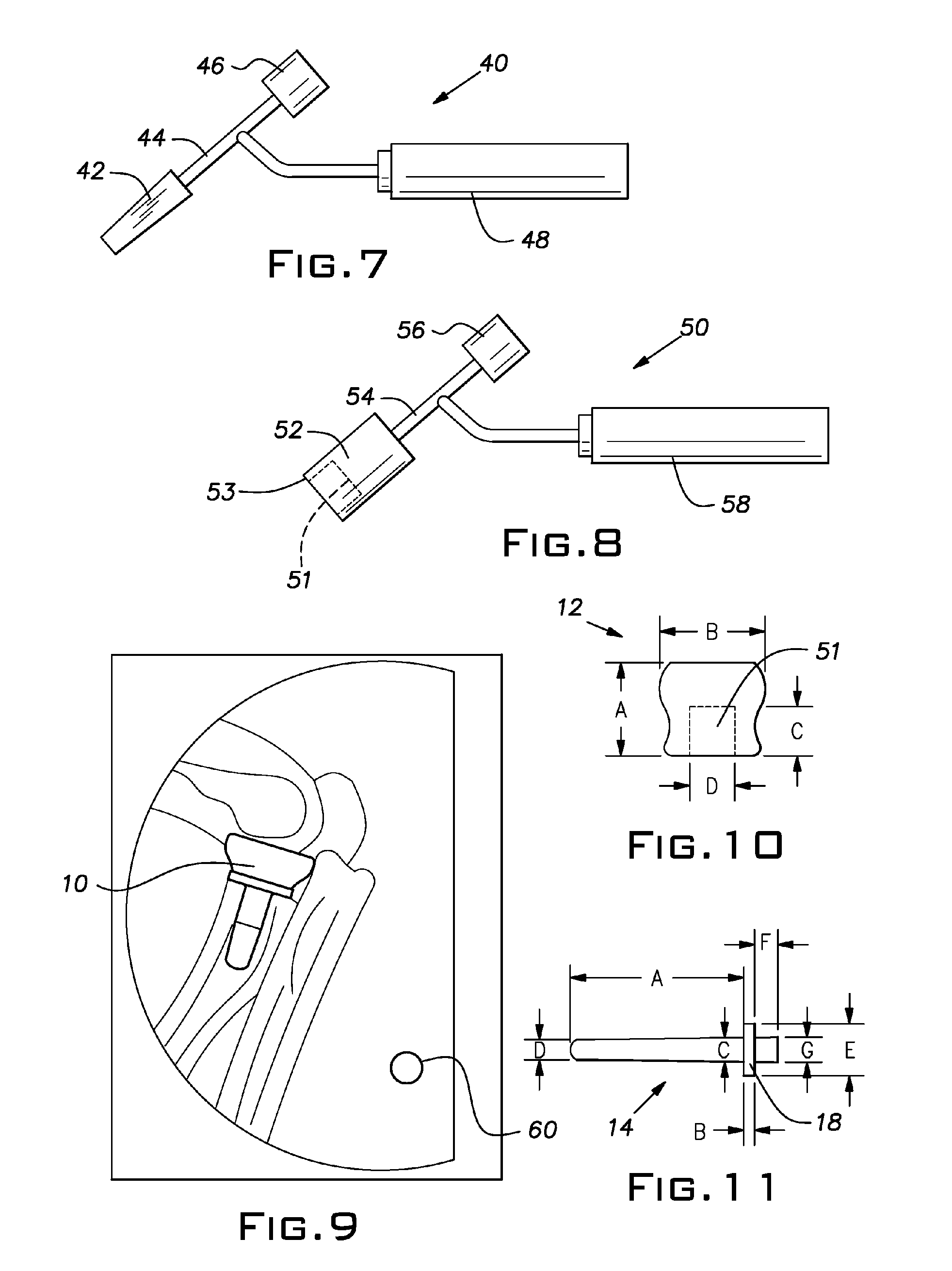Small joint orthopedic implants and their manufacture
- Summary
- Abstract
- Description
- Claims
- Application Information
AI Technical Summary
Benefits of technology
Problems solved by technology
Method used
Image
Examples
Embodiment Construction
[0033] Referring to FIGS. 1-4, an implant according to the invention is indicated generally by the reference numeral 10. The implant 10 as described herein is intended for radial head replacement, but it is to be understood that suitable modifications in size and shape as will be apparent to those skilled in the art will permit the implant 10 to be used for other types of small joints, such as ulnar head, basal thumb, and the like. It is expected that the implant 10 will be made of surgical grade stainless steel, although the use of other materials is possible.
[0034] The implant 10 includes a head 12 and a stem 14. A post 16 projects from the stem 14 along the longitudinal axis of the stem 14. A radially extending collar 18 is disposed at the intersection between the stem 14 and the post 16. The head 12 includes a generally cylindrical sidewall 20, a concave end face 22, a tapered portion 24 that tapers from a larger dimension at the intersection with the sidewall 20 to a smaller d...
PUM
 Login to View More
Login to View More Abstract
Description
Claims
Application Information
 Login to View More
Login to View More - R&D
- Intellectual Property
- Life Sciences
- Materials
- Tech Scout
- Unparalleled Data Quality
- Higher Quality Content
- 60% Fewer Hallucinations
Browse by: Latest US Patents, China's latest patents, Technical Efficacy Thesaurus, Application Domain, Technology Topic, Popular Technical Reports.
© 2025 PatSnap. All rights reserved.Legal|Privacy policy|Modern Slavery Act Transparency Statement|Sitemap|About US| Contact US: help@patsnap.com



